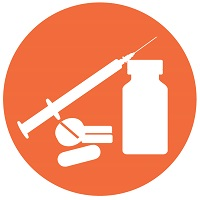Back
Clinical Pharmacology
Session: Rapid Fire: Translational Biomarkers: From Bench to Bedside
A Quantitative Systems Toxicity Workflow to Model Adverse Outcome Pathways’ Biomarkers
Wednesday, October 19, 2022
3:30 PM – 3:45 PM ET
Location: 152

Sebastian Polak, PhD
Senior Scientific Advisor
Certara UK
SHEFFIELD, United Kingdom
Rapid Fire Speaker(s)
Recent in silico advancements have introduced new approach methodologies (NAM) in drug development and risk assessment. NAMs provide various advantages, including supporting the three Rs (replace, reduce, refine), hypothesising underlying mechanisms, and facilitating system (in vitro to in vivo) and species translation of data. Here, we demonstrate a quantitative renal toxicity model using cisplatin and carboplatin as example compounds. Cisplatin is a platinum-based anticancer drug that presents significant nephrotoxicity while carboplatin, although similarly a platinum-based anticancer drug, does not present similar severities of nephrotoxicity even at a higher dose. A physiologically based pharmacokinetic (PBPK) model was developed for cisplatin and carboplatin and linked to a renal toxicity model integrating kidney transcriptomics, histopathology, and Kim-1 release to explore mechanisms for this disparity. The physiological basis of the PK model facilitated species translation that recovered known cisplatin and carboplatin PK in human, rat, and mouse. This model showed cisplatin exposure in the kidneys was significantly higher than that of carboplatin. Additionally, sensitivity analysis of the model parameters showed high cisplatin volatility and active kidney uptake as mechanisms for higher cisplatin exposure in the kidneys than carboplatin. The mechanistic structure of the PK model here can also be adapted for other platinum-based drugs, such as oxaliplatin. Linked to the physiologically relevant kidney cisplatin PK, the renal toxicity model was able to recover the dynamical changes of injury-relevant transcriptomics, necrotic cell fraction, and Kim-1 elevation observed in rat.
Learning Objectives:
- Upon completion participants will be able to identify data that can be integrated into quantitative toxicity models.
- Upon completion participants will be able to explore quantitative toxicity models to generate hypothesis for mechanisms of drug action.
- Upon completion participants will be able to recognise physiologically based quantitative models that support species translation.
- Upon completion participants will be able to demonstrate how quantitative toxicity models can support the three Rs.


